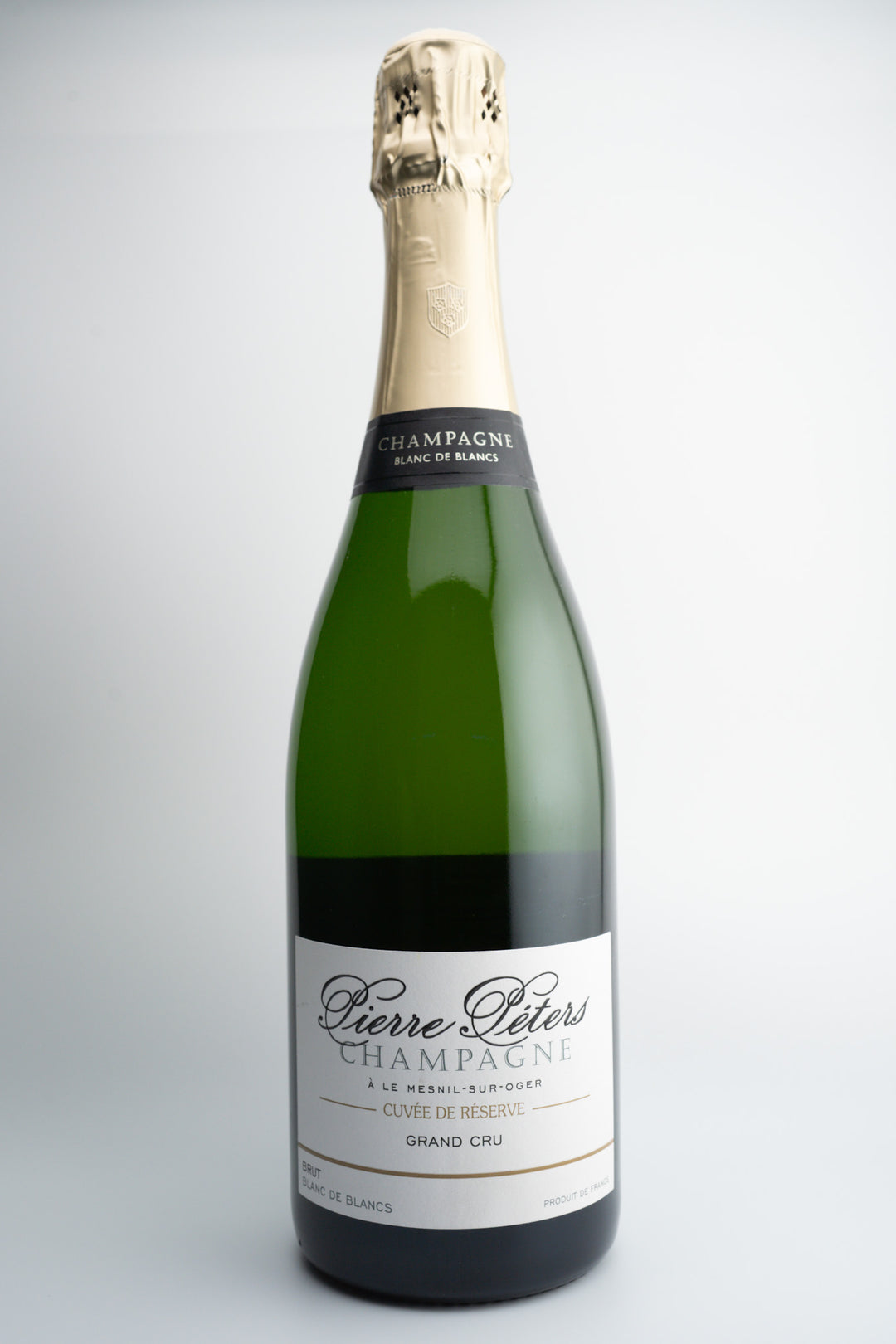Champs, please: A guide to Champagne
The Champagne Region and Terroir
Nestled in the northeastern corner of France, the Champagne wine region enjoys a unique confluence of climate, soil, and topography that lends distinctive character to its wines. Straddling the 49th parallel, it boasts a continental climate with cool temperatures moderated by maritime influences.
As Peter Liem explains in "Champagne" (2017), "Apart from its northerly latitude, the region's defining terroir influence is its omnipresent chalky subsoil, a sedimentary bedrock from the Cretaceous period that's rich in marine fossils."
This chalk not only provides excellent drainage but also imparts a signature minerality and vibrant acidity to the grapes and wines. The region is divided into five major sub-regions, each with its own distinct terroir influences.
The Montagne de Reims is a rolling, west-facing hill with thin, well-draining soils over a deep chalk subsoil. Premier and Grand Cru villages like Verzenay and Mailly produce muscular, structured Pinot Noir.
The Vallée de la Marne cuts through the heart of the region, with vineyards planted on southeast-facing slopes over chalk and clay. Pinot Meunier thrives here, contributing roundness and red fruit notes.
The Côte des Blancs, a chalk escarpment stretching south from Epernay, is the spiritual home of Chardonnay. Grand Crus like Le Mesnil, Oger, and Avize yield racy, mineral-driven Blanc de Blancs.
The Côte de Sézanne to the south features Kimmeridgian marl over chalk, lending richness to the wines. Chardonnay dominates this lesser-known region.
Finally, the Aube, or Côte des Bars, is the southernmost area with more continental climates. Here, the chalk is deeper under clay and limestone soils, producing fuller-bodied reds and whites.
Grape Varieties and Winemaking
Champagne is crafted from three primary grape varieties: Chardonnay, Pinot Noir, and Pinot Meunier. Chardonnay brings elegance, minerality, and longevity; Pinot Noir lends backbone, structure, and complexity while Pinot Meunier contributes fruitiness and early drinking appeal.
Most houses blend all three grapes, though single-variety bottlings like Blanc de Blancs (100% Chardonnay) are growing in popularity. Champagne's signature bubbles arise through a labor-intensive process involving two fermentations and extended aging on lees.
After the first fermentation, the still base wines are blended and bottled with a liqueur de tirage to induce a second fermentation in bottle. This trapped CO2 creates the famous mousse. The wine is then aged on its lees (spent yeast cells) for an extended period, gaining texture and complexity.
Finally, the rémuage process gradually turns and angles the bottles to coax the lees into the neck. After disgorgement to remove the lees, a dosage (sweetened wine) is added to top up the bottle, achieving the desired sweetness level from Brut Nature to Doux.
Top Smaller Producers
While big houses like Moët, Veuve Clicquot, and Ruinart are iconic, passionate Champagne lovers seek out the artisanal creations of smaller grower-producers.
Bonnet-Ponson: Based in Chamery, this grower crafts spectacular single-vineyard Blanc de Blancs from Chardonnay planted in the 1950s. The "Flaons" cuvée is a Grand Cru masterpiece with laser-like focus.
Gaston Chiquet: In Dizy, the Chiquet family has championed Pinot Meunier and Vallée terroirs since the 19th century. The "Tradition" shows remarkable vibrancy.
Pierre Peters: Rodolphe Peters farms tiny, east-facing Grand Cru plots in Le Mesnil. His "Les Chetillons" is pure Chardonnay bliss, showcasing citrus, brioche, and chalk notes.
Henri Giraud: Sourced from Giraud's own Grand Cru vineyards in Aÿ, the "Fût de Chêne" boasts complex aromas and rich texture from oak aging.
Laherte Frères: This organic/biodynamic Chavot estate is revered for terroir-driven Chardonnay gems like the vibrant and chalky "Ultradition."
Buying and Appreciating
When shopping for Champagne, pay attention to:Vintage vs Non-Vintage: Vintage cuvées showcase the best years, while blended non-vintage wines offer consistency.
Cuvée: Specific blends like Krug's powerful "Grande Cuvée" or Bollinger's elegant "La Grande Année."
Barrel Aging: Some top cuvées like Krug's see extended oak aging, adding complexity and richness.
Lees Aging: Extended lees aging builds creamy texture and autolytic brioche notes over time.
Grape Blend: From Blanc de Blancs (pure Chardonnay) to well-balanced multi-grape masterpieces.
Dosage: From bone-dry Brut Nature to richer Demi-Sec styles. Explore the range!
When tasting, pour into a tulip glass to showcase effervescence and aromatics. Do as Karen MacNeil advises in "The Wine Bible": "Let the bubbles subside before nosing, then enjoy the myriad aromas and flavors that unfold."
Appreciate the weight, texture, and persistence on the palate. Observe the perlage (bubble stream) and ultra fine bead for quality cues. Note how acidity, fruit, and autolytic brioche notes harmonize.
Pairings range from fresh seafood and delicate bites to richer dishes like mushroom risotto and even fried chicken. Age-worthy vintages can accompany game birds and aged cheeses. As chef de cave Richard Geoffroy of Dom Pérignon notes, "Champagne is a wine like any other — only better!"
Champagne's multi-faceted diversity offers endless avenues for discovery. Savor the journey as you explore its terroirs, master pairings, and encounter both legendary cuvées and future cult classics from emerging talents. Santé!
















